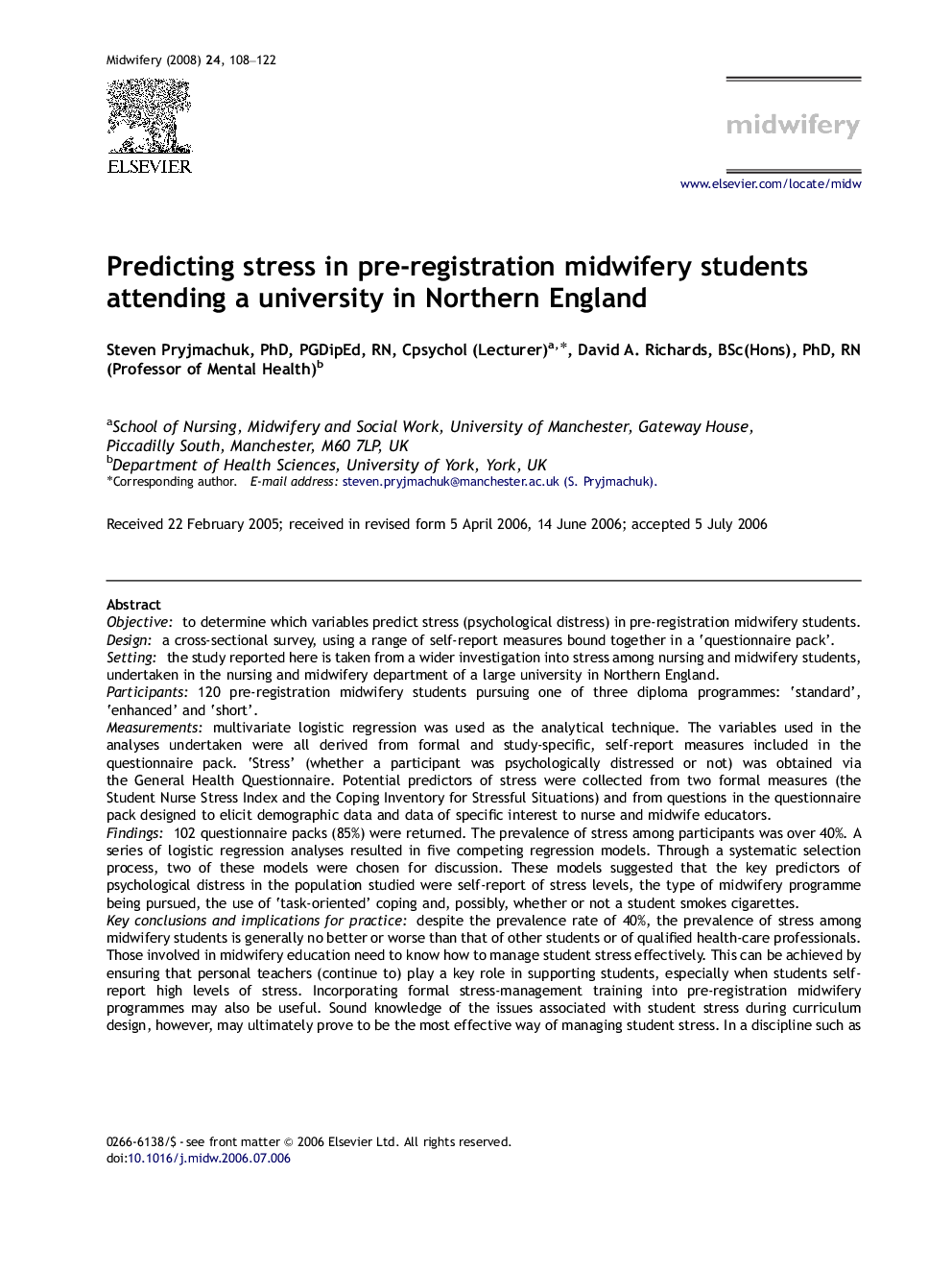| Article ID | Journal | Published Year | Pages | File Type |
|---|---|---|---|---|
| 1084945 | Midwifery | 2008 | 15 Pages |
Objectiveto determine which variables predict stress (psychological distress) in pre-registration midwifery students.Designa cross-sectional survey, using a range of self-report measures bound together in a ‘questionnaire pack’.Settingthe study reported here is taken from a wider investigation into stress among nursing and midwifery students, undertaken in the nursing and midwifery department of a large university in Northern England.Participants120 pre-registration midwifery students pursuing one of three diploma programmes: ‘standard’, ‘enhanced’ and ‘short’.Measurementsmultivariate logistic regression was used as the analytical technique. The variables used in the analyses undertaken were all derived from formal and study-specific, self-report measures included in the questionnaire pack. ‘Stress’ (whether a participant was psychologically distressed or not) was obtained via the General Health Questionnaire. Potential predictors of stress were collected from two formal measures (the Student Nurse Stress Index and the Coping Inventory for Stressful Situations) and from questions in the questionnaire pack designed to elicit demographic data and data of specific interest to nurse and midwife educators.Findings102 questionnaire packs (85%) were returned. The prevalence of stress among participants was over 40%. A series of logistic regression analyses resulted in five competing regression models. Through a systematic selection process, two of these models were chosen for discussion. These models suggested that the key predictors of psychological distress in the population studied were self-report of stress levels, the type of midwifery programme being pursued, the use of ‘task-oriented’ coping and, possibly, whether or not a student smokes cigarettes.Key conclusions and implications for practicedespite the prevalence rate of 40%, the prevalence of stress among midwifery students is generally no better or worse than that of other students or of qualified health-care professionals. Those involved in midwifery education need to know how to manage student stress effectively. This can be achieved by ensuring that personal teachers (continue to) play a key role in supporting students, especially when students self-report high levels of stress. Incorporating formal stress-management training into pre-registration midwifery programmes may also be useful. Sound knowledge of the issues associated with student stress during curriculum design, however, may ultimately prove to be the most effective way of managing student stress. In a discipline such as midwifery, these issues are as divergent as the politics of midwifery, the processes used in recruitment and selection, the role of women in society, and the nature, quality and quantity of the learning experiences and the assessment strategies used.
